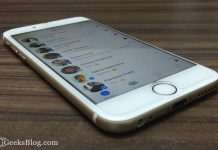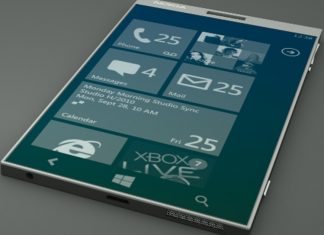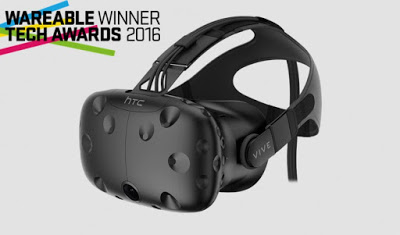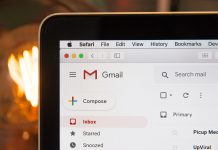If you store delicate information on a USB stick, you must consider encryption to secure your data in the case of physical loss or security breach.
When it comes to encrypting your device, there are a few ways you can go about doing it, depending on the kind of computer you’re using, however in this blog we’ll be covering BitLocker on Windows.
Before we proceed any further, it’s worth bearing in mind that USBs, like just about every device, is never 100% protected even after encryption. However, hacking and exploiting a devices’ vulnerabilities is a supremely complex task, which requires vast amounts of technical skill so long as the device is protected correctly.
Secondly, security advancements are always improving and updating software with the aim of keeping data more secure, which is why it’s so important to keep your device updated at every available opportunity.
What is Encryption?
When your files are encrypted, they’re incomprehensible unless someone can decrypt them, which is usually only possible using specific software or with some knowledge of what the password might be to descramble the data.
One might encrypt files to hide sensitive information that must be kept private. For example, if you store financial information, photographs or any documents, that, if in the wrong hands, could cause you significant problems, then you need to encrypt.
Do I Need Encryption?
We’ve all seen news stories, where someone in a position of significant standing misplaces a USB device, containing information that can be readily accessed by anyone who finds it; such as the example a few years ago, when someone found an unencrypted USB device which stored highly detailed, in-depth information about Heathrow airports’ anti-terrorism measures.
No one wants to find themselves in such a situation, whether it’s misplacing the data of a large corporation or even your own personal information.
Generally speaking, most of us don’t store and transport information like this on a daily basis, and we only move it to a USB stick for a specific purpose, so encryption isn’t relevant in every situation. It’s really only for when we’re transporting information, which could present a significant security breach if the flash drive is misplaced or the host device, such as laptop or mobile, has been infected by malware and data needs to be moved.
No matter why you need to encrypt data, the process is pretty similar on all devices: choose the information you’d like to keep hidden and then decide how to keep it secure.
How to Encrypt Your USB Device on Windows Using BitLocker
Microsoft’s built-in encryption tool BitLocker will encrypt your device and then ask for a password whenever someone plugs it into a PC, which means that only those that know the password will be able to see any of your information.
Note: if the steps below don’t work for you, it means your version of Windows doesn’t currently support BitLocker.
Step 1: Firstly, connect your USB device to your computer, then right-click on the USB drive and click Turn on BitLocker.

Step 2: Next, you’ll be prompted to choose how you want to be able to unlock the drive to see your data. You can either choose a password, a smart card or both. However, for most users, the password option is usually the best choice.

Step 3: After this, you’ll have to choose the method you’d like to use in order to recover the device if you’ve forgotten your password.

You have three options; saving the key to your Microsoft account, save to a file or even print the recovery key. Keeping your data to your Microsoft account is probably the easiest way since it will be stored securely in on the Microsoft servers. However, in the unlikely event that your data is ever needed in some kind of law enforcement investigation, Microsoft will be forced to hand over the recovery key when presented with a good reason to do so.
If you choose to save it to a file, then you must ensure it’s stored somewhere safe, if someone were to find your recovery key, they’d literally have the means to access all of your data. Finally, you could always print your key and then store it securely in a safe or a discreet hiding place.
Step 4: Now, you’ll have to decide how much of the drive you wish to encrypt. If it’s a new device, it’s best just to encrypt the used space and it’ll encrypt any new data as you add it. If you already have information on it, then just encrypt the whole device.
Depending on which Windows version you’re running, you might not see this popup. Instead, you’ll be presented with the screen below:

Windows 10 runs improved and stronger encryption methods, which aren’t compatible with earlier versions of Windows. If you need this improved security, upgrade to 10, but if you need to connect the device to older versions, select ‘compatible mode’.
After this, your PC will begin to encrypt your USB – the time it takes to do this will depend largely on how big your drive is and how much data needs to be encrypted.
Once complete, if you pop your device into any other Windows 10 machine, you’ll see that a notification informing you that your device is ‘BitLocker-protected’.
You’ll also be able to see that your drive icon in Explorer now has a padlock attached to it:

Step 5: Now, when you double-click your drive, you’ll be given a password prompt. This is where you’ll also be able to enter your recovery key under ‘More Options’ if you can’t remember your password.
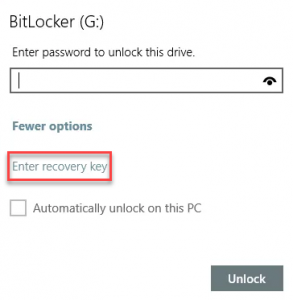
If you wish to turn off BitLocker at any point, simply right click the image of the drive in Explorer, select ‘Manage BitLocker’ and click ‘Turn off BitLocker’.
In this menu, you can also change your password, backup your recovery key, add smart card verification and switch auto-unlock on and off for specific devices.
With the technological world evolving so quickly, the need to protect our digital assets has become more critical than ever. BitLocker is just one of the many ways you can protect your data, and it’s a step that should certainly be taken if you travel with sensitive information on a USB drive or laptop.
This article was written by Richard LeCount, Founder and Managing Director of USBMakers – Specialist branded USB Stick and Power Bank supplier.













